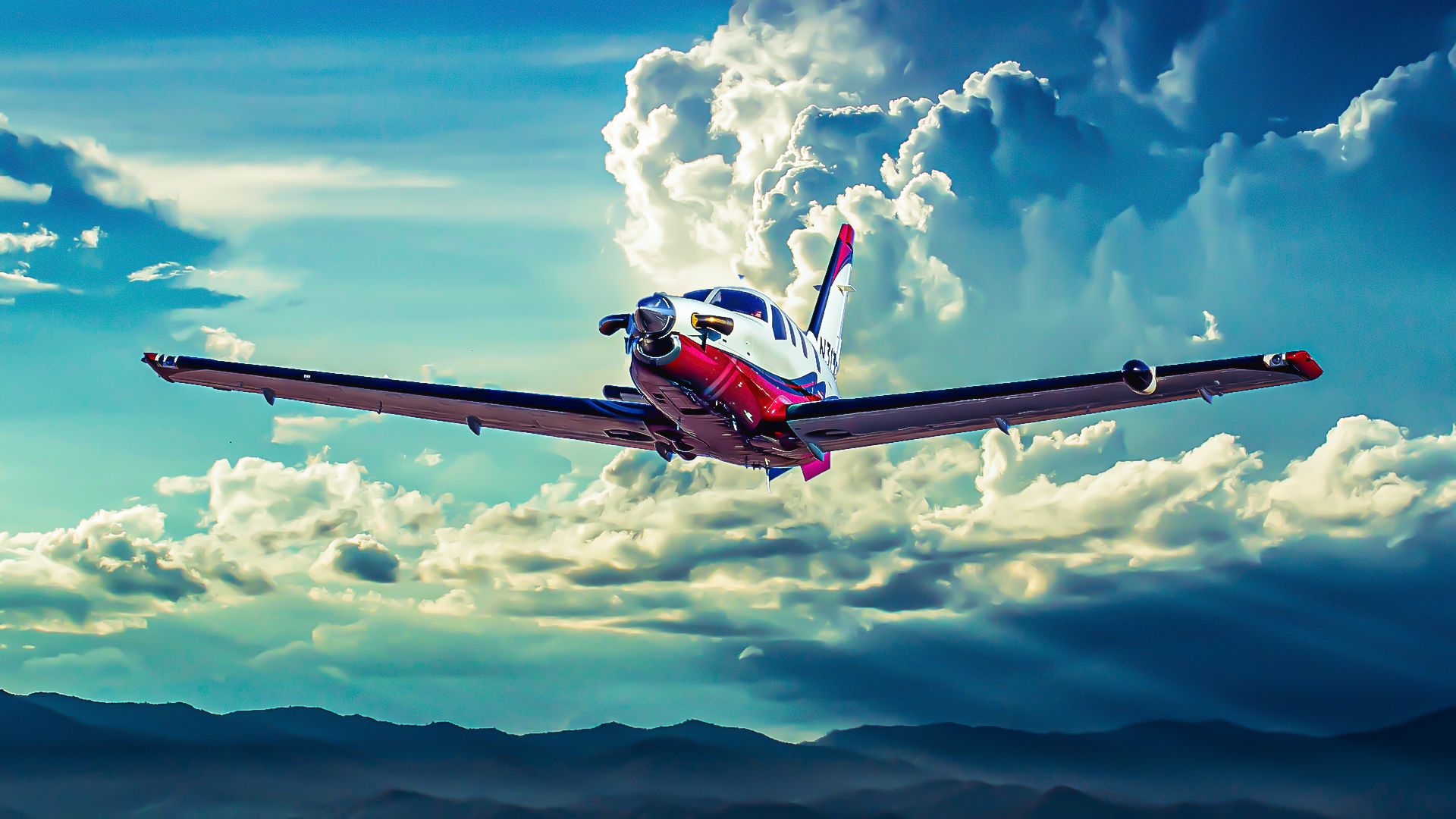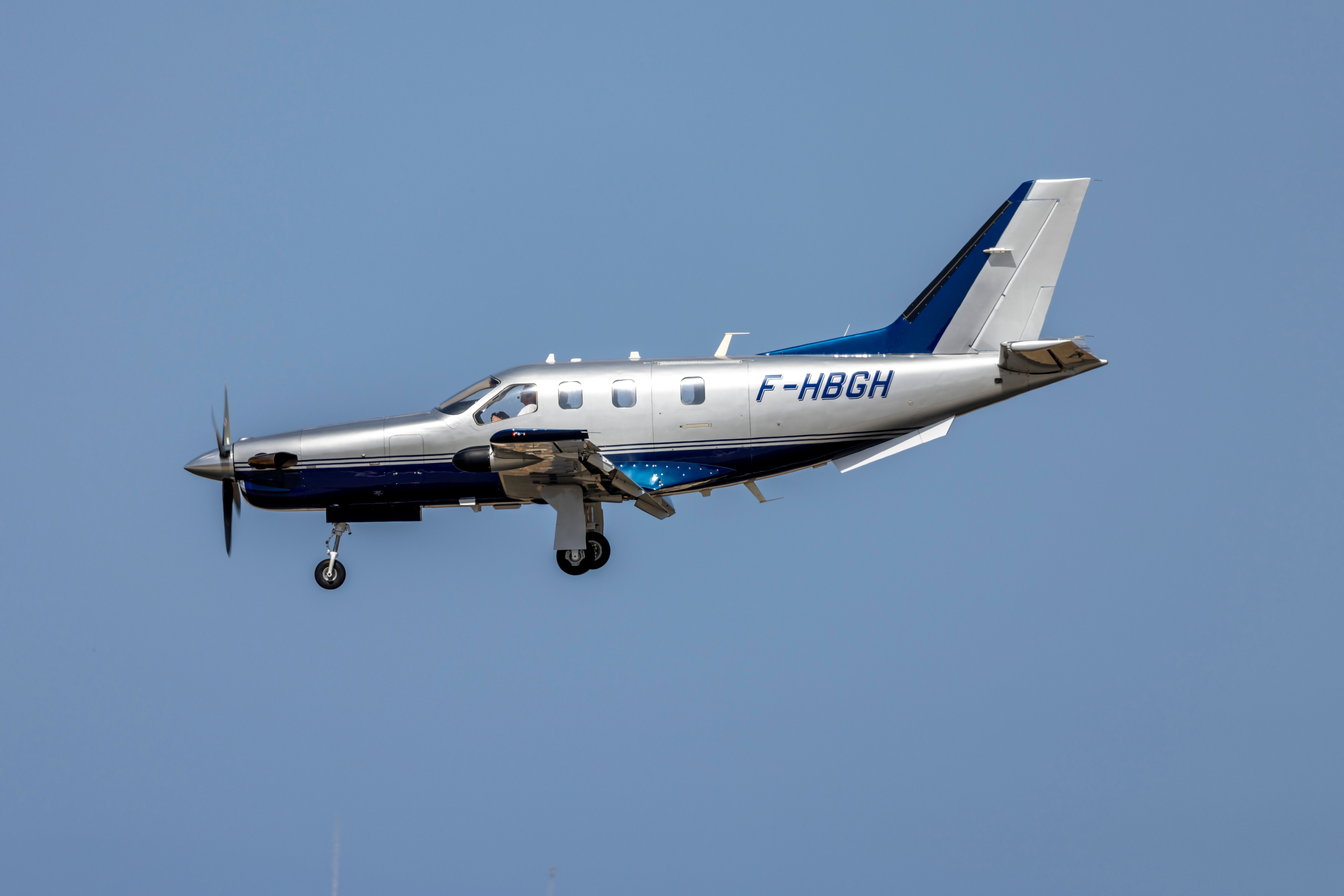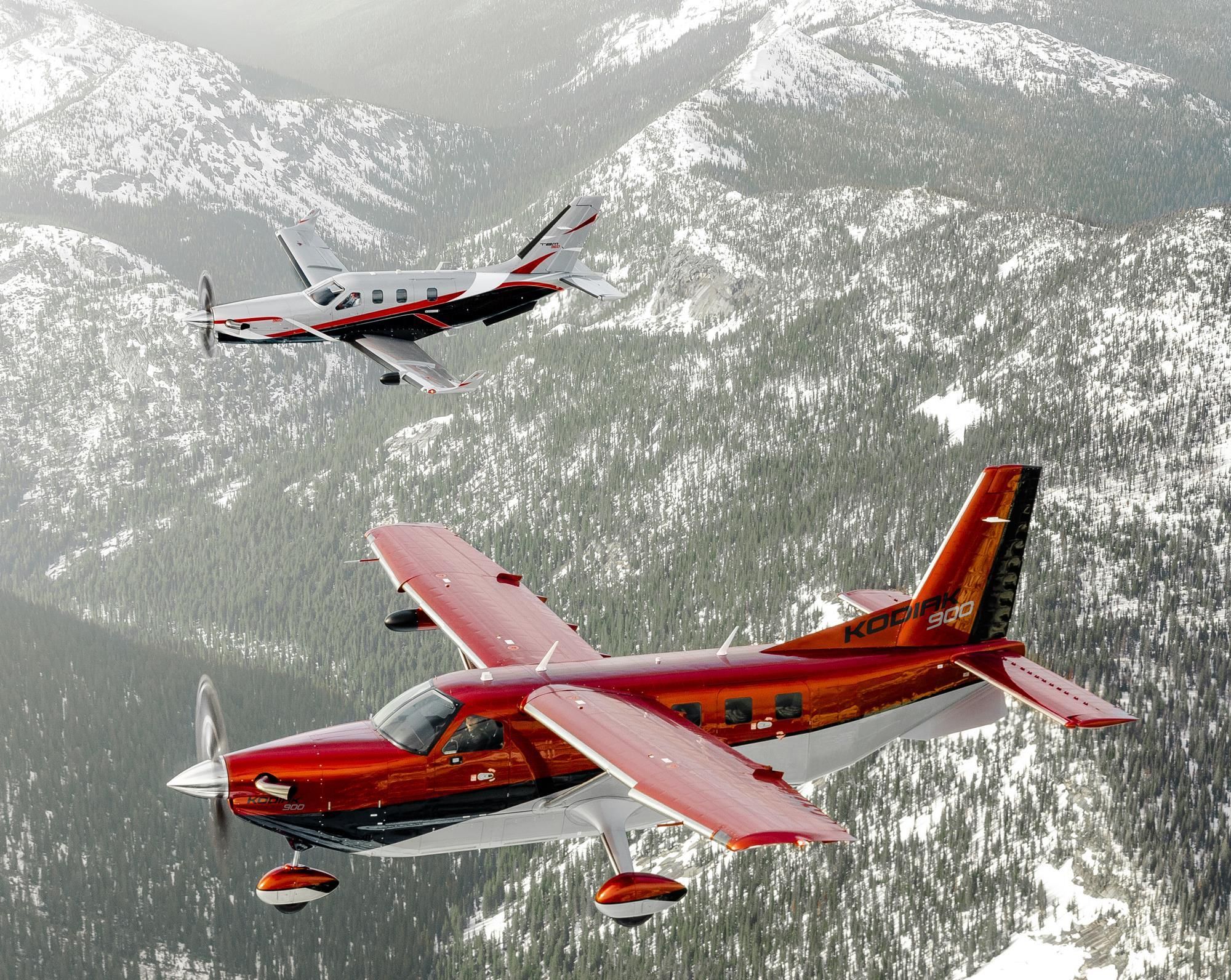The SOCATA TBM belongs to a family of high-performing aircraft originally designed and manufactured by the French aircraft manufacturer Socata, which Daher later acquired. Over the years, the company has incorporated evolving technologies to pilot the TBM Series at a higher level.
Pilots on the TBM series enjoy bump-free rides with real-time monitoring and alerts they obtain, thanks to an advanced avionics suite. The owners of the TBM series intend to keep the aircraft high up with five-blade propellers, which thrust the aircraft better than its four-blade counterparts.
It’s also a versatile aircraft handy for different missions because of its large cabin space and adaptable seats. Currently known as the Daher TBM, the SOCATA TBM stands out as the pioneer of high-performance single-engine turboprop aircraft.
SOCATA TBM series’ unique design and structure
Aircraft have come a long way and become lighter since the Wright brothers used spruce to make the airframe. It’s hard to imagine the time when aircraft were developed using wood, fabric, and wires. Then came aluminum for its strength, and now the TBM series is developed from composite material such as carbon fiber. Composite equipment makes aircraft lighter without compromising on strength.
Photo: BlueBarronPhoto | Shutterstock / Simple Flying
Takeoff and landing with the TBM series is a smooth experience. It has big flaps called the Fowler flaps that give that extra lift compared to regular planes. The result? It allows aircraft to take off and land from shorter runways than most other aircraft and lets pilots approach and land safely without stalling.
Safety
The TBM series takes the safety of its pilots and passengers seriously through technology and unmatched innovation. The TBM 960 has the HomeSafe emergency autoland system, which assumes the role of a pilot in an unfortunate scenario where they’re incapacitated and land the plane. The software selects a suitable airport and brings the plane to touchdown.
Photo: InsectWorld / Shutterstock / Simple Flying
According to the owner, “The system is activated manually by an easily recognizable orange button atop the cockpit instrument panel, or semi-automatically if the Emergency Descent Mode has been engaged. The [HomeSafe] software integrates weather and terrain information to select the best airport for landing, taking into account aircraft fuel range and runway length. During the landing rollout, HomeSafe will simultaneously activate the landing gear and brakes and shut down the engine.”
Performance
The SOCATA TBM series showcases powerful performance parameters that make it stand out in the aviation industry. These aircraft have a maximum cruising speed of 330 knots and a service ceiling of 31,000 feet. These features provide jet-like performance and yet retain the turboprop’s versatility, positioning the SOCATA TBM Series in a class that directly challenges light jets.
The SOCATA TBM series illustrates excellent performance parameters that make it unique in the aviation market. These aircraft have a maximum cruising speed of 330 knots and a service ceiling of 31,000 feet. These features provide jet-like performance with turboprop attributes that make the SOCATA TBM Series compete effectively against light jets.
Compared to a multi-engine aircraft, the SOCATA TBM’s single-engine makes the aircraft relatively cheaper to operate. The series employs Pratt & Whitney PT6A engines that are widely believed to be fuel efficient. With such engines, it’s possible to cover up to 1,730 nautical miles. These aircraft are ideal for business travelers because they can travel thousands of miles in less than two hours.
Versatility
The TBM series is an unusually versatile aircraft and the ideal choice for many aviation needs. It has space for both cargo and passengers and lands safely in remote areas while maintaining passenger comfort.
Configurable cabin space
Planes transport different types of passengers with different cargo requirements, some on business trips and others on recreational activities. The TBM aircraft’s seats are designed to accommodate different needs, as they’re easy to remove or rearrange to create more space. With this layout, these airplanes shift from passenger transport to carrying larger items, such as business materials.
Wide cargo doors
With the TBM series, the crew doesn’t have to break down bulky cargo to fit in the doors. The extra-wide composite doors allow efficient loading, unloading, and transport of heavy or outsize items that might be a problem in standard doors.
Photo: Daher / Simple Flying
And in a day when people prioritize convenience and efficiency, TBM’s dual-storage capability makes the aircraft competitive. One storage compartment in the front and another in the back give the SOCATA TBM Series ample storage options. With so much space, plane operators can maximize payload without compromising on passenger comfort.
Performance across diverse conditions
The TBM series is unstoppable as it can reach high altitudes and challenging environments. It operates from shorter runways without incidents and even hard-to-reach places unsuitable for light jets.
Advanced avionics: Efficient navigation
The TBM 900 and TBM 960 new generation have an advanced avionics system installed that improves the flying experience. According to Nicolas Chabbert, owners and operators are impressed with the efficiency, flight experience, cabin comfort, and sustainability of TBM 960. The senior vice president of Daher aircraft division made the remarks during their 80th milestone achievement.
The positive impression can be owed to the aircraft’s powerful Garmin G3000 and additional features such as:
- Touchscreen controllers that make the control of numerous systems easier, such as cabin layouts
- Large displays with high resolution and Synthetic Vision System (SVS) that allow the pilot to track the ground, objects, and other aircraft successfully
- Slides that allow the reconfiguration of seats, cabinets, and tables
- Digital controlled environment for increasing passengers’ comfort and maximizing cargo space
- The ability to perform automatic landings in case of an emergency to protect passengers no matter the layout.
Comparison of TBM aircraft models
|
Specification |
TBM 700 |
TBM 850 |
TBM 900 |
TBM 910 |
TBM 940 |
|---|---|---|---|---|---|
|
Crew |
1-2 |
1-2 |
1-2 |
1-2 |
1-2 |
|
Passenger seat |
Up to 6 |
Up to 6 |
Up to 6 |
Up to 6 |
Up to 6 |
|
Wingspan |
42 ft |
42 ft |
42 ft |
42 ft |
42 ft |
|
Max speed |
300 knots |
320 knots |
350 knots |
330 knots |
330 knots |
|
Propeller type |
Four blade |
Five blade |
Five blade |
Five blade |
Five blade |
SOCATA TBM Series: Shaping modern aviation
The SOCATA TBM Series has taken steps to ensure passenger comfort and that pilots take off and land with ease. It’s no wonder Daher secured the top position in Professional Pilot (Pro Pilot) magazine’s annual Product Support Survey for turboprop airplanes for the fourth consecutive year in 2024. TBM series’ unique features set it apart as a new generation of single-engine turboprop aircraft with higher performance. This aircraft means business as it accommodates personal and business travel. It also appeals because of the flexibility of configurations for passengers and cargo.
Considering the development of their latest models and their ability to integrate new technologies, the SOCATA TBM Series has the potential for further success and is definitely future-ready.





